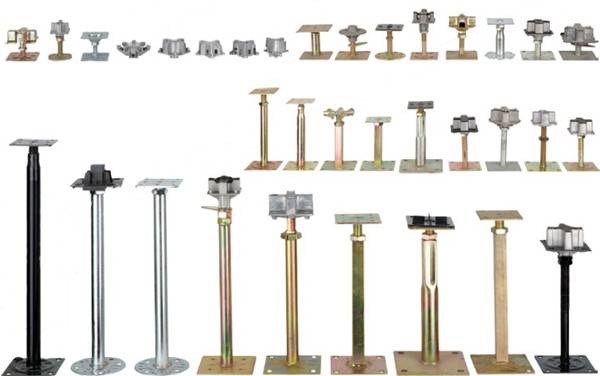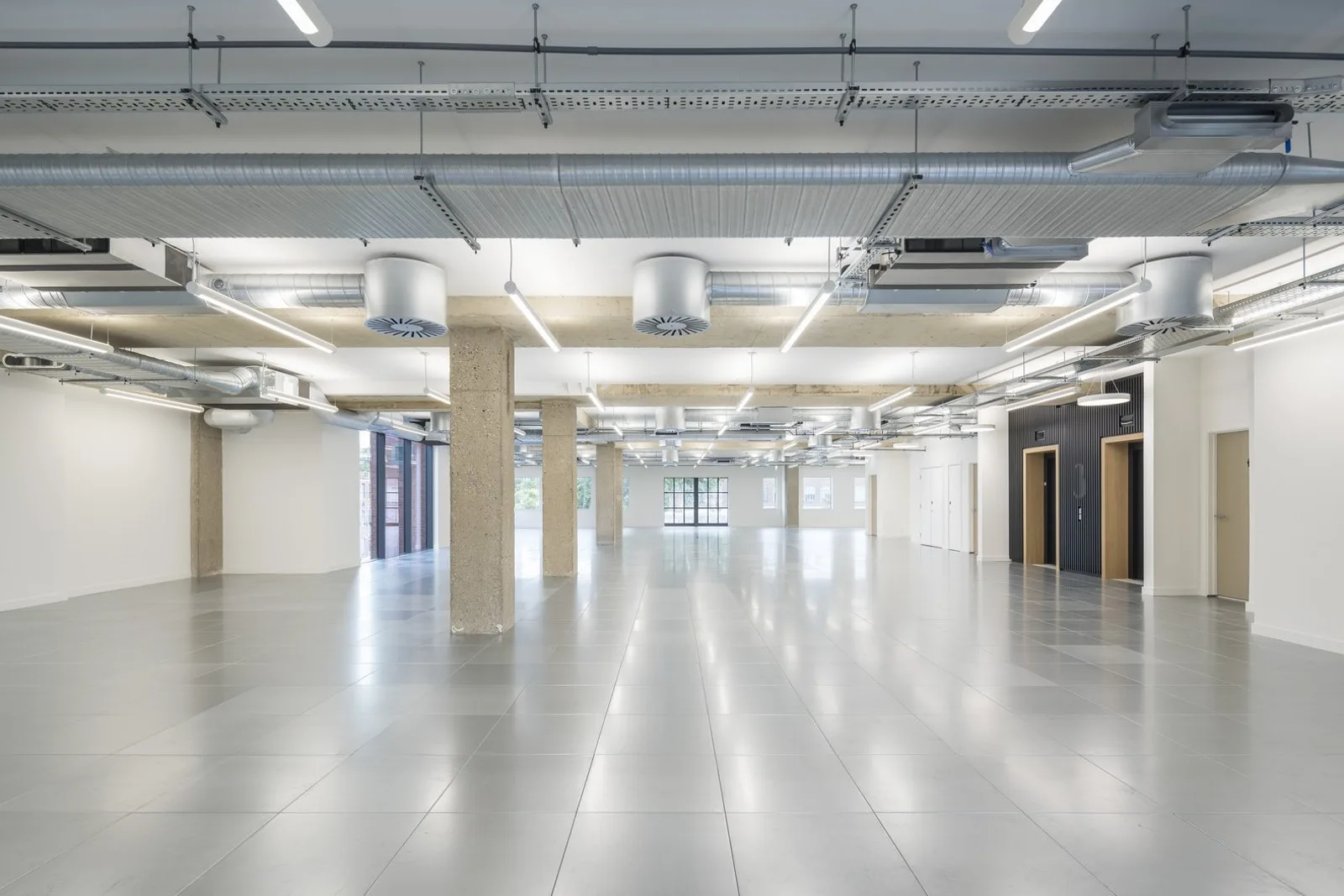Standard raised floor systems include top flooring and bottom under-structures. The under-structures consists of pedestals, stringers, and screws. Pedestals and stringers are fixed by screws, bases of raised floor pedestals are fixed on the ground with glue or expansion screws. After installing of under-structures system, place the flooring on directly.

There are different types of raised floor, the pedestals used for them are also very different.
Raised floor pedestals type
Steel raised floor with bare finish
Steel raised floor is widely used in office environment, used in conjunction with carpets on top. As the four corners of panels have corner lock holes, there is no need to use stringers. Screws can connect panels and pedestals directly.
Considering the actual installation, there are two types of pedestals for steel raised floor—— aluminum head pedestals and flat head pedestals.
1.Aluminum head pedestals
Aluminum head pedestals known as central pedestals, aluminum while. The aluminum material is light and hard, gaskets on the top can reduce the friction between panels and the aluminum head, it helps to reduce noise. The amount of aluminum head pedestals accounts for around 80% of all raised floor pedestals.

2.Flat head pedestals
Flat head pedestals known as border pedestals. Why not use aluminum head pedestals? That’s because border panels are always cut to fit the size. Irregular bottom surface can connect aluminum head, but it can be placed on flat head pedestal directly. The amount of aluminum head pedestals accounts for around 80% of all pedestals. For more info, you can check installation video to learn more.

Anti static steel raised floor
Anti static steel raised floor is widely used in data center, computer rooms, etc.. The surface of panels can stick different kinds of anti static coverings, such as HPL, PVC, Ceramic, etc..
The system use stringer under-structures based on different height. If the load capacity is different, use different pedestals. You can also check installation video to learn more.

Calcium sulphate panels
Due to this environment friendly production process and the use of ecological materials, calcium sulphate raised floor will be recyclable from 90% to 97%. So calcium sulphate panels are more and more widely used.
The system use stringer under-structures, based on different height, different panels’ load capacity, different pedestals should be used.

Raised floor pedestals spec
Raised floor pedestal size
The standard diameter of the threaded rod tube is M 16, M 18. We can also customize M 20 and M 22.
The standard diameter of the pedestal tube is 22 mm, 25 mm, 28 mm. We can also customize 32 mm, 38 mm, 48 mm, etc..
The standard size & thickness of pedestal bottom plate is 95*95*2.0 mm, 100*100*2.5 mm. We can customize 125*125*3.0 mm, 150*150*4.0 mm, etc..
The height of our pedestals can be from 50 mm-2500 mm.
In highly seismic locations, or some applications with high floor heights and heavy loading, we can customize seismic pedestal with bracing systems / heavy duty pedestal.

Pedestal color
The most widely used ways to coat raised floor pedestals are galvanizing and powder epoxy, while galvanizing can be divided into hot-dip galvanizing and zinc galvanizing.

Zinc galvanizing
Zinc galvanizing is an electroplating physical process, the most popular colors are yellow and black. Because it is easy to process, the price is cheap. And the anti-rust effect is good. It has been widely used on raised floor pedestals.
Hot-dip galvanizing
Hot-dip galvanizing can be expensive, its color is white. It has strong adhesion and high thick. Even after several years, galvanizing will not fall off easily.
Powder epoxy
When the height of pedestals exceeds 1 meter, powder epoxy is more widely used. The popular color is black. Because galvanizing container’s depth has a limit. When pedestal is high, it may not be fully immersed. Then powder epoxy is the choice even when pedestals’ height exceed 2 meters.





